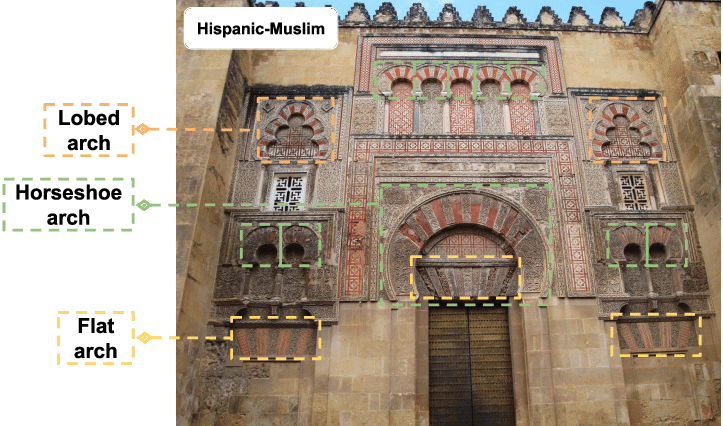Key Architectural Elements: Columns, Arches, Facades
Architecture is defined by its fundamental elements, which not only serve structural purposes but also contribute to the aesthetic and functional aspects of buildings. Columns, arches, and facades are among the key architectural elements that have shaped architectural styles and civilizations throughout history. This exploration delves into their significance, evolution, and enduring impact on architectural design.

Key Architectural Elements
Columns
Significance and Function: Columns are architectural elements that support vertical loads and distribute weight, allowing architects to create open interior spaces and monumental structures. They have been integral to various architectural styles, serving both structural and decorative purposes.
Types of Columns:
- Doric: The simplest and oldest order, characterized by a plain, fluted shaft and a capital with a square abacus.
- Ionic: Known for its voluted capital and more slender proportions, adding elegance and sophistication to Greek temples and public buildings.
- Corinthian: The most ornate order, distinguished by its elaborate capital adorned with acanthus leaves, popular in Roman and neoclassical architecture.
Evolution and Adaptation: Columns have evolved from their classical origins in ancient Greece and Rome to influence subsequent architectural styles, including Gothic, Renaissance, and modernist movements. They continue to be utilized in contemporary architecture, often reinterpreted and adapted to suit functional and aesthetic requirements.
Arches
Structural Integrity and Symbolism: Arches are curved structures that span openings and support weight through compression, allowing for the creation of expansive interior spaces and enduring architectural landmarks. They symbolize strength, stability, and architectural ingenuity.
Types of Arches:
- Roman Arch: Semi-circular arch used extensively in Roman architecture, such as aqueducts, amphitheaters, and triumphal arches.
- Gothic Pointed Arch: Characterized by its pointed profile, allowing for greater height and structural stability, prominent in Gothic cathedrals and religious architecture.
- Moorish Horseshoe Arch: Distinctive for its horseshoe-shaped profile, prevalent in Islamic architecture, particularly in Spain and North Africa.
Architectural Applications: Arches have been integral to the development of architectural styles worldwide, influencing both structural techniques and aesthetic expression. They continue to inspire contemporary architects, who utilize arches in innovative ways to create striking entrances, windows, and interior spaces.
Facades
Definition and Purpose: Facades are the exterior faces of buildings that define their architectural character and interact with their urban context. They serve as protective barriers against weather elements while expressing the building’s function, style, and cultural significance.
Components of Facades:
- Materials: Facades are constructed using a variety of materials, including stone, brick, concrete, glass, and metal, chosen for their durability, aesthetic appeal, and contextual relevance.
- Ornamentation: Facades often feature decorative elements such as moldings, carvings, and relief sculptures that enhance their visual impact and communicate symbolic meanings.
- Fenestration: The arrangement and design of windows, doors, and openings within facades influence natural light penetration, ventilation, and interior spatial qualities.
Evolution and Contemporary Trends: Facades have evolved from simple walls to complex compositions that reflect advancements in construction technology, architectural theory, and cultural preferences. Contemporary facades emphasize sustainability, energy efficiency, and digital design tools to achieve innovative and visually striking architectural expressions.
Conclusion
Columns, arches, and facades are integral to architectural design, offering structural support, symbolic meaning, and aesthetic identity to buildings across diverse historical periods and cultural contexts. Their evolution from ancient civilizations to modern architecture highlights their enduring relevance and adaptability in shaping the built environment. As architectural elements continue to evolve, they inspire architects to innovate, experiment with new materials and technologies, and create buildings that respond to contemporary challenges while honoring architectural traditions.
3.5
